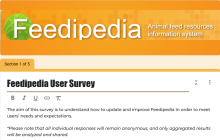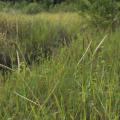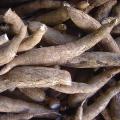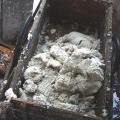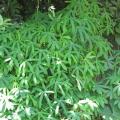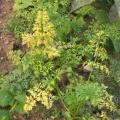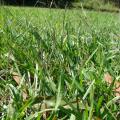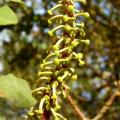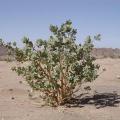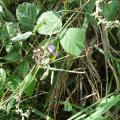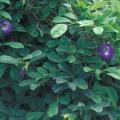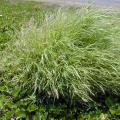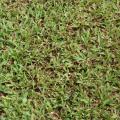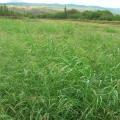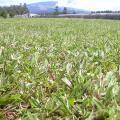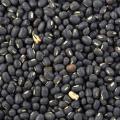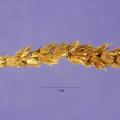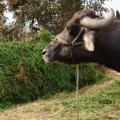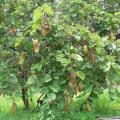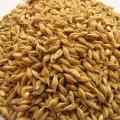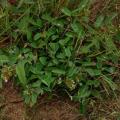Feedipedia news
After 13 years, it is time for the website to be upgraded! Before we start, we need your input.
Explore Feedipedia
|
Centipede grass (Ischaemum timorense Kunth) is an annual or perennial spreading... Read more |
Cassava (Manihot esculenta Crantz) is a shrub grown in the tropics and... Read more |
The processing of cassava tubers yields the following by-products that can be valuable... Read more |
|
The carrot (Daucus carota L.) is an annual or biennial herb with a thick fleshy... Read more |
Carpet grass (Axonopus fissifolius (Raddi) Kuhlm.) is a rhizomatous,... Read more |
|
|
The carob tree (Ceratonia siliqua L.) is an evergreen shrub or tree cultivated... Read more |
Calotropis (Calotropis procera (Aiton) W. T. Aiton) is a spreading shrub or... Read more |
Calopo (Calopogonium mucunoides Desv.) is a vigorous, hairy annual or short-... Read more |
|
The butterfly pea (Clitoria ternatea L.) is a vigorous, trailing, scrambling or... Read more |
Buffel grass (Cenchrus ciliaris L.) is a valuable tropical grass cultivated in... Read more |
Buffalo grass (Paspalum conjugatum P. J. Bergius) is a spreading perennial grass... Read more |
|
Blue panic (Panicum antidotale Retz.) is a vigorous, tufted perennial grass that... Read more |
Blood can be collected during the slaughter of various livestock species (cattle, pigs,... Read more |
Blanket grass (Axonopus compressus (Sw.) P. Beauv.) is a robust creeping... Read more |
|
Black gram (Vigna mungo (L.) Hepper) is an erect, fast-growing annual,... Read more |
Birdwood grass (Cenchrus setiger Vahl) is a tufted perennial grass up to 70-100... Read more |
Berseem (Trifolium alexandrinum L.) is one of the most important leguminous... Read more |
|
Bauhinia thonningii is a legume tree 4 to 15 m high, with a round crown. The... Read more |
Barley (Hordeum vulgare L.) is one of the main cereal crops. With 150 million... Read more |
Desmodium barbatum (L.) Benth is a short-lived perennial, erect, more or less... Read more |
Pages
Recent resources
 Opinion paper: Phasing out of the aid provided to the livestock sector during expectedly recurrent emergencies
- Makkar, 2024. animal
Opinion paper: Phasing out of the aid provided to the livestock sector during expectedly recurrent emergencies
- Makkar, 2024. animal
Open access opinion paper that makes a case that the emergency aid do more harm than good to African countries. It is valid for all the fields of agriculture but has direct consequence for animal agriculture. The context here is the aid provided during emergencies that are foreseeable recurrent.
The role of livestock in food security, poverty reduction and wealth creation in West Africa
- Molina-Flores et al., 2020. Food and Agriculture Organization of the United Nations Accra, 2020
Livestock is key to 377 million people in West Africa and in some countries, up to 60% of the population is involved in livestock production. The demand for animal products is increasing with population growth, urbanization, growing middle class, and due to shifting consumer preferences towards animal products. To meet this growing demand, countries in West Africa must engage in accelerated sustainable livestock production undertaking. Livestock development is key to eradicate hunger and poverty. This book attempts to provide up-to-date, and reliable information on the potentials, opportunities, and challenges of the livestock subsector in West Africa.
Pulses and their by-products as animal feed
- Sherasia et al., 2017. In: Calles, T.; Makkar, H. P. S. (Eds), FAO, Food and Agriculture Organization of the United Nations, Rome, Italy
This document provides a state-of-the-art review of the recent research (published and unpublished) on the use of pulses and their by-products as animal feed. It aims at raising awareness on the use of pulses and their by-products. It highlights the nutritional role of pulses and pulse by-products as animal feed and is a contribution to the legacy of the 2016 International Year of Pulses. This document will further enhance the use of these feed resources in other continents, besides Asia, where many pulse by-products are simply dumped. It is also expected that the synthesis presented contributes to make the use of pulses and their by-products as animal feed more efficient. This document will be useful for extension workers, researchers, feed industry, policy-makers and donors alike.









